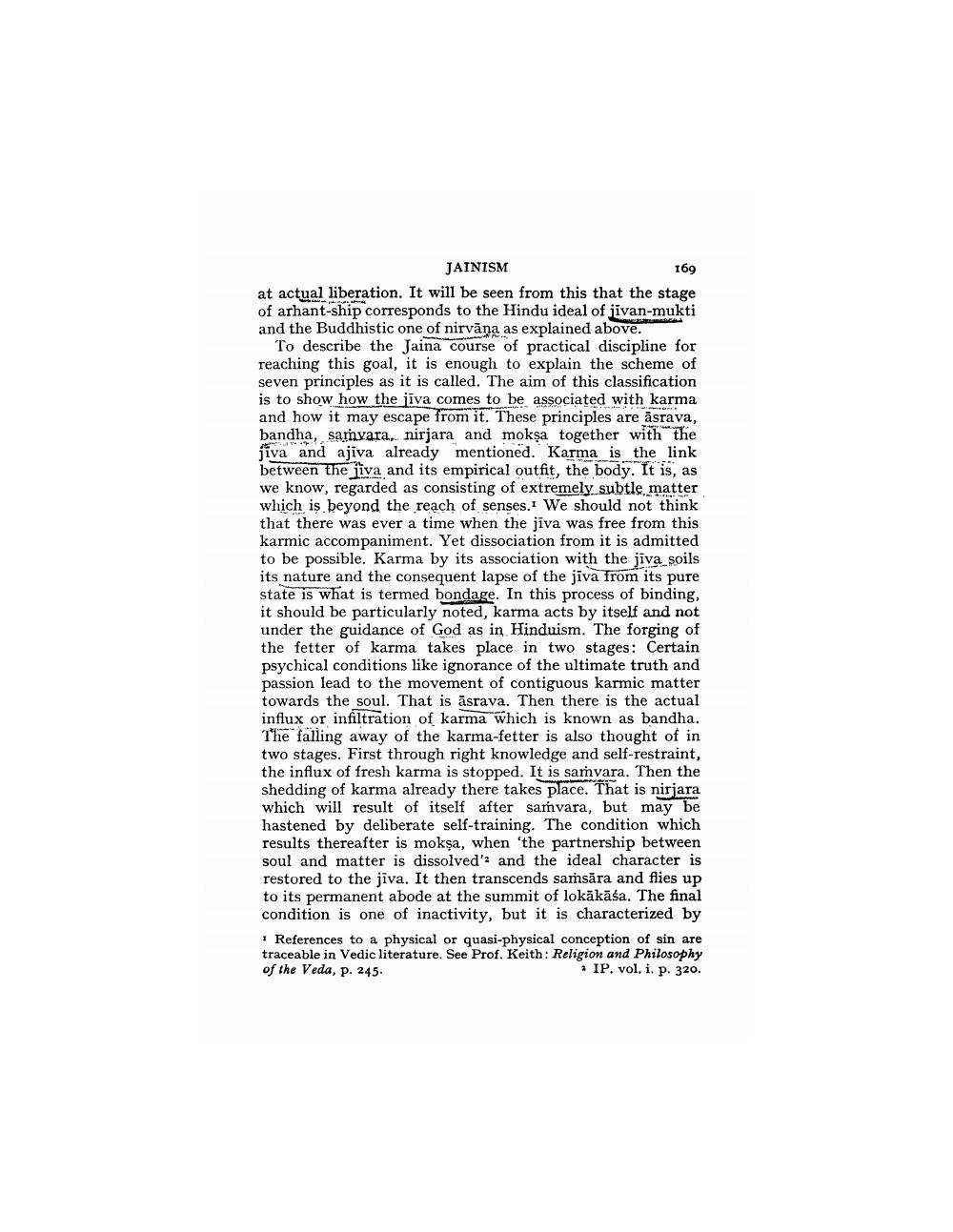________________
JAINISM
169 at actual liberation. It will be seen from this that the stage of arhant-ship corresponds to the Hindu ideal of jivan-mukti and the Buddhistic one of nirvana as explained above.
To describe the Jaina course of practical discipline for reaching this goal, it is enough to explain the scheme of seven principles as it is called. The aim of this classification is to show how the jīva comes to be associated with karma and how it may escape from it. These principles are asrava, bandha, samvara, nirjara and mokşa together with the jiva and ajiva already mentioned. Karma is the link between the jiva and its empirical outfit, the body. It is, as we know, regarded as consisting of extremely subtle, matter which is beyond the reach of senses. We should not think that there was ever a time when the jīva was free from this karmic accompaniment. Yet dissociation from it is admitted to be possible. Karma by its association with the jiva soils its nature and the consequent lapse of the jiva from its pure state is what is termed bondage. In this process of binding, it should be particularly noted, karma acts by itself and not under the guidance of God as in Hinduism. The forging of the fetter of karma takes place in two stages: Certain psychical conditions like ignorance of the ultimate truth and passion lead to the movement of contiguous karmic matter towards the soul. That is ásrava. Then there is the actual influx or infiltration of karma which is known as bandha. The falling away of the karma-fetter is also thought of in two stages. First through right knowledge and self-restraint, the influx of fresh karma is stopped. It is samvara. Then the shedding of karma already there takes place. That is nirjara which will result of itself after samvara, but may be hastened by deliberate self-training. The condition which results thereafter is mokşa, when the partnership between soul and matter is dissolved' and the ideal character is restored to the jiva. It then transcends saṁsāra and flies up to its permanent abode at the summit of lokākāśa. The final condition is one of inactivity, but it is characterized by ! References to a physical or quasi-physical conception of sin are traceable in Vedic literature. See Prof. Keith: Religion and Philosophy of the Veda, p. 245.
* IP. vol. i. p. 320.




